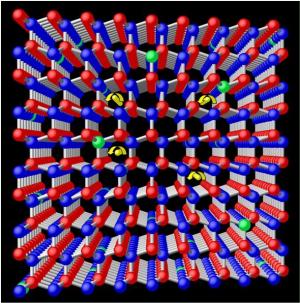Researcher develop a simpler, faster and more efficient MRAM using half-way magnetic flipping
Chinese researchers have shown that magnetic memory (MRAM), logic and sensor cells can be made faster and more energy efficient by using an electric, not magnetic, field to flip the magnetization of the sensing layer only about halfway, rather than completely to the opposite direction.
The new cell requires only two layers (traditional MRAM requires three or more layers) - and so hopefully will be easier and cheaper to make. The design is a simple thin-layer sandwich of two different materials, each of which has very different magnetic and electrical properties. Applying a voltage to the ferroelectric layer switches its polarization in a way that starts to change the magnetic orientation of the adjacent ferromagnetic layer. This partial change alters the electrical resistance of the entire stack enough to indicate whether the cell is storing a "0" or a "1" data bit.

